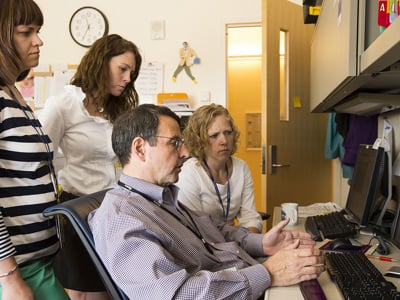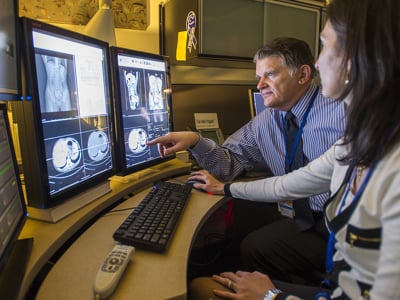- Doctors & Departments
-
Conditions & Advice
- Overview
- Conditions and Symptoms
- ¿Está enfermo su hijo?
- Parent Resources
- The Connection Journey
- Calma Un Bebé Que Llora
- Sports Articles
- Dosage Tables
- Baby Guide
-
Your Visit
- Overview
- Prepare for Your Visit
- Your Overnight Stay
- Send a Cheer Card
- Family and Patient Resources
- Patient Cost Estimate
- Insurance and Financial Resources
- Online Bill Pay
- Medical Records
- Política y procedimientos en el hospital
- Preguntamos Porque Nos Importa
-
Community
- Overview
- Addressing the Youth Mental Health Crisis
- Calendar of Events
- Child Health Advocacy
- Community Health
- Community Partners
- Corporate Relations
- Global Health
- Patient Advocacy
- Patient Stories
- Pediatric Affiliations
- Support Children’s Colorado
- Specialty Outreach Clinics
Your Support Matters
Upcoming Events
Colorado Hospitals Substance Exposed Newborn Quality Improvement Collaborative CHoSEN Conference (Hybrid)
lunes, 29 de abril de 2024The CHoSEN Collaborative is an effort to increase consistency in...
-
Research & Innovation
- Overview
- Pediatric Clinical Trials
- Q: Pediatric Health Advances
- Discoveries and Milestones
- Training and Internships
- Academic Affiliation
- Investigator Resources
- Funding Opportunities
- Center For Innovation
- Support Our Research
- Research Areas

It starts with a Q:
For the latest cutting-edge research, innovative collaborations and remarkable discoveries in child health, read stories from across all our areas of study in Q: Advances and Answers in Pediatric Health.


Heart Arrhythmia Management in Kids
Written by Johannes von Alvensleben, MD
The complaint of palpitations or development of syncope is a common presenting concern that patients bring to their primary care provider. While the vast majority of patients have no life-threatening cause for their symptoms, it can present a diagnostic challenge to providers and frequently results in a referral to other specialists. Understanding the most common causes for palpitations or syncope, as well as the "red flags" that should prompt a more intensive work-up or referral, can make the evaluation of these complaints more manageable.
Palpitations
Palpitations are the perceived abnormality of the heartbeat characterized by awareness of cardiac muscle contractions in the chest: hard, fast and/or irregular beats. They are both a symptom reported by the patient and a medical diagnosis, but do not necessarily imply a structural or functional abnormality of the heart. In general, the provider is attempting to determine whether the palpitations are secondary to an arrhythmia, with the most common diagnoses being supraventricular tachycardia (SVT), premature atrial contractions (PACs) and premature ventricular contractions (PVCs).
Diagnosis: history of present illness
When determining whether palpitations are likely secondary to an arrhythmia, the history can be quite helpful. Several important aspects include:
- Onset and termination: Is it abrupt or gradual?
- Rate: Can the rate be counted or is it "too fast to count"?
- Association with rest or exercise
- Association with chest pain, shortness of breath, dizziness or syncope
- Duration: Do palpitations last for seconds or hours?
- Frequency: Does it occur daily (or several times per day) or less often?
For many providers, the overarching question regarding palpitations is: "What is the likelihood that this is secondary to SVT?" SVT typically has an abrupt onset and termination and may be described by younger patients as "heart beeping." The rate is usually too fast to count and has the sensation of "buzzing" under the fingertips. It is commonly associated with chest discomfort, shortness of breath and occasionally dizziness. Syncope is quite rare. Younger patients will frequently experience SVT while at rest, while adolescent patients develop SVT during exercise. This is secondary to the differing SVT mechanisms that are more common in these age groups. Daily symptoms that last for only a few seconds are much less likely to be SVT.
Diagnosis: other history and physical exam
In general, family history is less helpful to determine whether an arrhythmia is to blame for palpitations. Though PVCs tend to run in families, their overall prevalence is so high that a positive family history is rarely predictive.
Like family history, the physical examination is also unlikely to assist in the diagnosis. While extrasystoles or an irregular rhythm may suggest atrial or ventricular ectopy, sinus arrhythmia would present similarly and is a normal finding. A murmur can point to specific structural heart abnormalities, which may or may not be related.
Diagnosis: testing
Providers can determine whether an arrhythmia is occurring with an electrocardiogram (EKG), Holter monitor and/or transient event monitor. Knowing the clinical utility of each can assist the provider in selecting the correct test for each situation.
- An EKG is best used to assess the presence of an ongoing arrhythmia (PACs or PVCs) or potential risk of arrhythmia (ventricular pre-excitation suggesting Wolff-Parkinson-White syndrome).
- A Holter monitor is used to determine the overall frequency of ectopy or to assess heart variability in the setting of baseline bradycardia or tachycardia. It's typically not useful in the evaluation of episodic palpitations.
- A transient event monitor is usually the most useful in assessing episodic palpitations, particularly for the documentation of SVT.
When to refer to a pediatric cardiologist
Providers should refer to cardiologists for palpitations for diagnosis or ongoing management of a particular rhythm disturbance. By using these testing strategies, providers can refer the majority of patients with an established diagnosis. Ongoing management can range from observation to advanced cardiologic testing and medications.
Premature atrial contractions (PACs)
In the vast majority of patients, the diagnosis of isolated PACs is an incidental finding and not specifically related to palpitations. In these circumstances, PACs do not contribute to symptoms, will not cause cardiac pathology (myopathy) and do not require ongoing follow-up.
Referral is indicated in the setting of an ectopic atrial tachycardia, which is most commonly detected on a Holter monitor or transient event monitor. In this case, a baseline EKG is obtained to rule out structural heart disease or the development of a tachycardia-induced cardiomyopathy. Medications, most frequently a beta blocker, can be used to control the ectopic focus, though many patients eventually undergo an electrophysiologic study and ablation. Exercise restrictions are typically not necessary unless a known structural abnormality or cardiomyopathy is present.
Premature ventricular contractions (PVCs)
As with PACs, PVCs are most commonly an incidental finding during routine evaluations. Unlike PACs, however, even isolated or asymptomatic PVCs should prompt a referral to cardiology as there is a risk of ectopy-induced cardiomyopathies.
PVCs may arise from almost any location in the ventricles, though a right or left ventricular outflow tract origin accounts for the vast majority, particularly in otherwise healthy individuals. Providers can use a 12-lead EKG to predict this. Locations other than the outflow tracts typically prompt a more intensive evaluation. All patients will have an EKG and a baseline 24-hour Holter monitor. In those cases where the PVC origin is the outflow tract, the EKG is normal and the 24-hour ectopic burden is <10%, no additional follow-up is typically necessary. Patients are not restricted from athletic participation from a cardiac perspective. When the ectopic burden is >10%, some degree of follow-up is typically recommended with the most common being annual evaluations with a repeat EKG. As before, athletic participation is not restricted.
Exercise stress tests are typically reserved for patients with atypical PVC morphologies (non-outflow tract origin) or if there is a potential association with symptoms and/or syncope. Outflow-tract mediated PVCs may increase with or be suppressed by exercise so this response is less often helpful in management. A history of exertional symptoms, particularly syncope, necessitates a stress test to evaluate for catecholaminergic polymorphic ventricular tachycardia (CPVT). Additional evaluation tools include a cardiac MRI to assess for cardiac fibrosis or morphologic predictors or arrhythmogenic right ventricular cardiomyopathy (ARVC) and a signal-averaged EKG.
As with PACs, the majority of patients with PVCs do not require intervention, though providers can utilize beta blockade for symptomatic ectopy. Ablation procedures are reserved for symptomatic patients not controlled with medications or those with the development of cardiomyopathies.
Supraventricular tachycardia (SVTs)
SVT is the most common tachyarrhythmia in pediatrics (excluding sinus tachycardia) with an incidence of roughly 1:1,000. Many will present in the first year of life and 90% of pediatric SVT will involve a re-entrant circuit between the atria and ventricles.
As described previously, the mechanism of SVT can vary in the younger versus older pediatric patients with accessory pathways (either concealed or Wolff-Parkinson-White syndrome) being more common in younger patients. Atrioventricular nodal re-entrant tachycardia (AVNRT) is the most likely cause of SVT in adolescents and young adults.
The diagnosis of SVT relies on documentation of the arrhythmia; either on a transient event monitor or a 12-lead EKG during active palpitations. A Holter monitor is much less useful in this case because of the transient and episodic nature of SVT. Prior to diagnosis, providers can review vagal maneuvers with patients for whom a strong suspicion of SVT is suggested by the history. Providers should refer all patients with documented SVT to cardiology for additional evaluation.
A screening EKG will be performed to assess for structural abnormalities. While most patients with SVT will have structurally normal hearts, the presence of congenital heart disease, in particular Ebstein's anomaly, predisposes to accessory pathways. The overall management depends on patient/family preference and the presence of ventricular pre-excitation.
In the absence of Wolff-Parkinson-White syndrome, SVT is rarely a life-threatening condition and management options include observation with vagal maneuvers, antiarrhythmics for rhythm control and electrophysiologic study/ablation. All pediatric patients with ventricular pre-excitation are recommended to undergo invasive testing given the risk of pre-excited atrial fibrillation and sudden death. In the current age of pediatric ablations the risk is quite low, typically quoted with a <1% chance of any significant complications. In particular, most pediatric centers will utilize cryotherapy as part of their lesion placement, which reduces the risk of permanent heart block to essentially zero.
Refering patients to a pediatric cardiologist at Children’s Colorado
To order diagnostic testing for arrhythmias, obtain a consult or refer a patient to a pediatric cardiologist at Children's Colorado's Pediatric and Adult Congenital Electrophysiology Program, call OneCall at 720-777-3999.



 720-777-0123
720-777-0123






